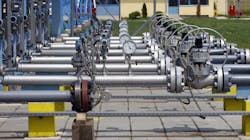Previous articles described the sewage collection systems for two adjacent sewage districts where the flow measurements used to allocate expenses and bill one of the sewage district’s flowmeters was questioned in court.
In general, companies hire experts to investigate what happened, explain what occurred to the company, explain why a particular party is at fault and provide expert testimony in court — all in terms that can be easily understood by a layperson.
Good experts are expensive so companies tend to hire as few experts as possible (usually one) on a given case and trust that the expert can address all aspects of the case.
As such, experts are generally trusted sources of information about the technical aspects of a case, but they sometimes can become enamored by being the primary source of information, education and opinions provided to the client. A good expert, however, will recognize when an important aspect of the case is beyond his or her expert knowledge and proactively request that the client retain an additional expert to focus on that particular aspect. In my experience as an expert witness, working with other experts has led to challenging (in a positive way) and rewarding experiences that yielded results that complemented my findings and provided a more solid case for the client.
For example, the benefits of having a second expert occurred on another case involving a flowmeter in a water treatment system for a miniature water park at a hotel where a flowmeter that allegedly failed was the primary focus of the litigation. Interestingly, combining my flowmeter expertise with the expertise of an experienced swimming pool engineer yielded insights that neither of us could obtain separately.
This approach is not much different than involving additional people with different expertise to solve an engineering problem in a plant.
Read more next month about the sewage districts.
About the Author
David W. Spitzer
David W Spitzer’s new book Global Climate Change: A Clear Explanation and Pathway to Mitigation (Amazon.com) adds to his over 500 technical articles and 10 books on flow measurement, instrumentation, process control and variable speed drives. David offers consulting services and keynote speeches, writes/edits white papers, presents seminars, and provides expert witness services at Spitzer and Boyes LLC (spitzerandboyes.com or +1.845.623.1830).
